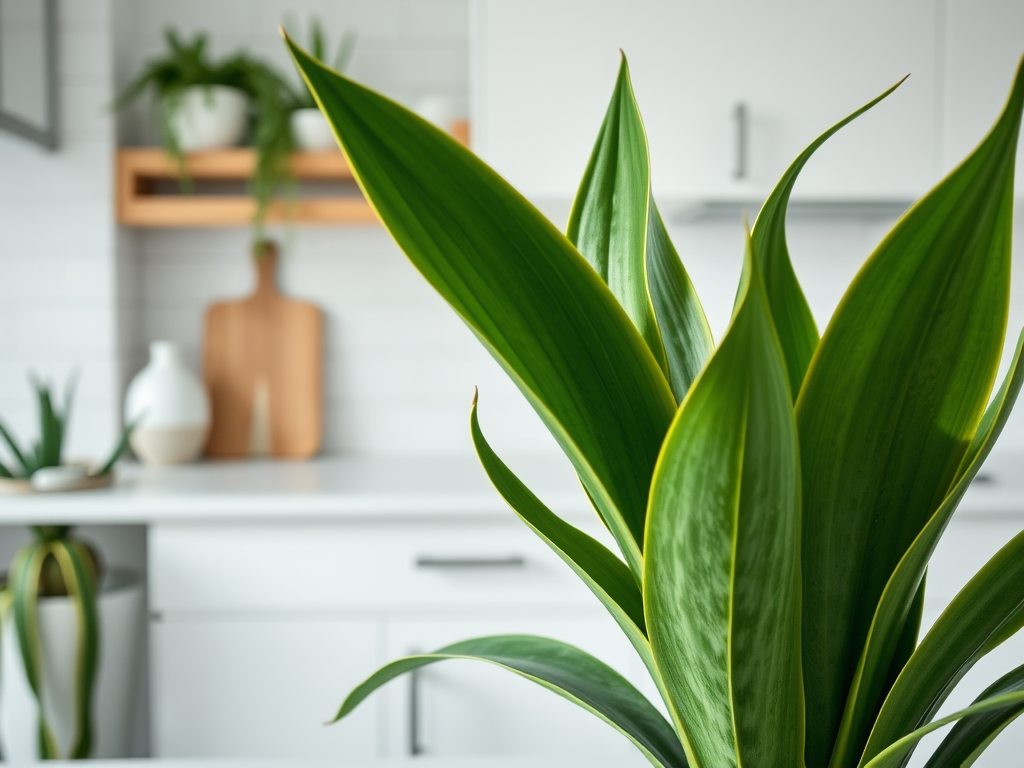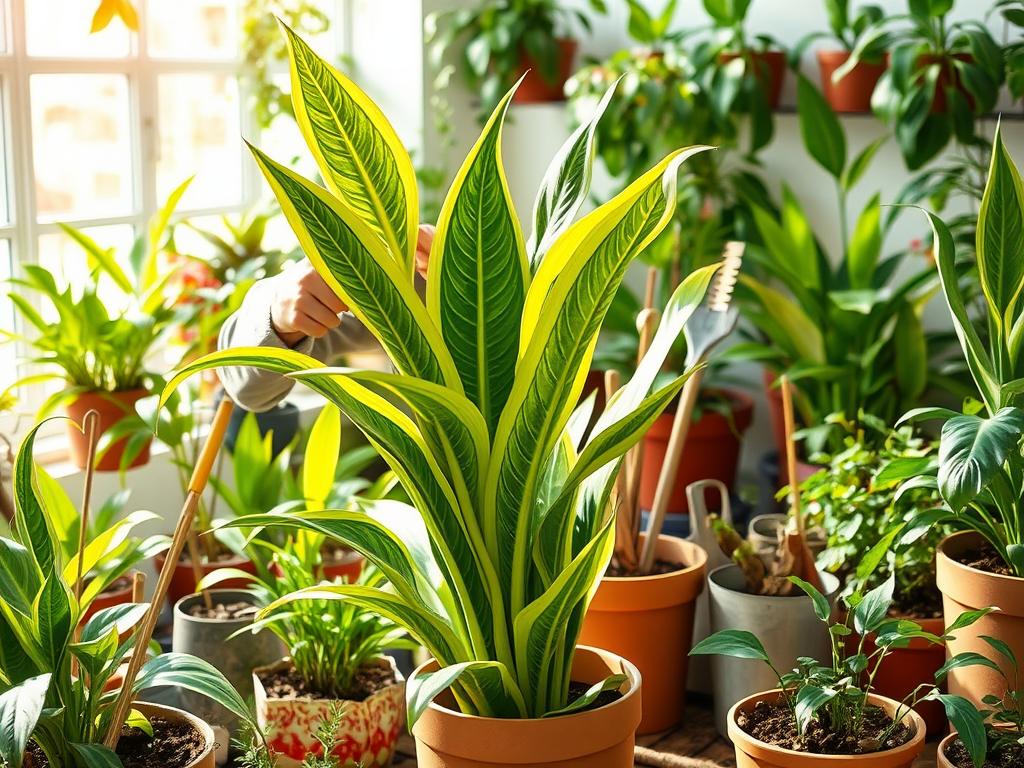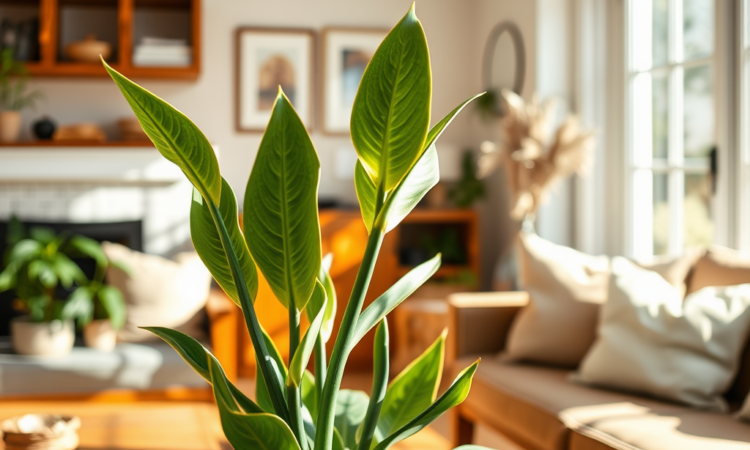Snake plants, also known as Sansevieria or mother-in-law’s tongue, have steadily taken the spotlight in the world of houseplants. They’re favored not only for their striking appearance but also for their remarkable resilience. Whether you are a seasoned plant parent or embarking on your first plant journey, understanding how to properly care for your snake plant can lead to a lush and thriving specimen in your home. In this guide, we’ll explore the essential steps involved in maintaining this hardy houseplant, ensuring that it remains a vibrant part of your indoor decor. Let’s delve into the wonders of snake plants and unlock the secrets to their care!
Understanding the Snake Plant

To appreciate how to care for a snake plant, it’s essential first to understand its characteristics. Originating from the arid regions of Africa, this plant exhibits thick, upright leaves with striking green patterns. Its unique structure enables it to store water, making it an ideal choice for those who might forget to water frequently. Snake plants are known for their air-purifying abilities, helping improve indoor air quality. This remarkable plant is also quite forgiving, thriving under varying circumstances, which makes it perfect for busy individuals. Finally, recognizing its native environment helps in replicating conditions that assist in optimal growth.
Choosing the Right Location

When it comes to placement, snake plants are quite adaptable, but they do have preferences. Ideally, they enjoy bright, indirect sunlight, making a spot near a window perfect. However, they can also adapt to low-light conditions, though this might slow their growth. In terms of temperature, snake plants prefer a warm environment, ideally between 60°F and 80°F (15°C to 27°C). It’s crucial to avoid placing them in drafty areas or near heating vents, as sudden temperature fluctuations could damage the plant. As you plan the layout of your home or office, consider these factors when determining the best location for your snake plant.
Watering Your Snake Plant
One of the most critical aspects of keeping a snake plant healthy is getting the watering schedule just right. Overwatering is a primary cause of plant failure, so it’s essential to allow the soil to dry out between waterings. Generally, watering every 2-6 weeks should suffice, depending on the season and humidity levels. Always check the soil moisture by sticking your finger into the soil a few inches deep. If it feels dry, it’s time to water. Conversely, if the soil feels damp, wait a few more days. Additionally, using well-draining soil helps prevent waterlogging, ensuring that your plant thrives.
| Watering Frequency | Season |
|---|---|
| 2-4 weeks | Spring and Summer |
| 4-6 weeks | Fall and Winter |
Consistency is key when it comes to watering your snake plant. Start with the following best practices:
- Lightly water around the base, avoiding the leaves to minimize the risk of rot.
- Use room temperature water to prevent shock to the roots.
- Consider using a moisture meter for precise soil readings.
As a best practice, adjust your watering routine with the changing seasons. During the winter months, your snake plant’s growth slows, so less frequent watering is necessary. In contrast, during the warmer summer months, your plant is likely to absorb more water. Paying attention to these variations will keep your snake plant in optimal condition.
Fertilizing Your Snake Plant
Fertilizing your snake plant is important for promoting growth and overall vitality. However, this plant isn’t a heavy feeder, so a little goes a long way. The ideal time to fertilize is during the growing season, typically in spring and summer. Use a balanced, diluted liquid fertilizer every month or so. An organic fertilizer can also provide beneficial nutrients without the risk of chemical buildup. Always avoid fertilizing during the fall and winter, as the plant enters a dormant phase. This approach helps sustain healthy growth while preventing root burn.
Pruning and Maintenance
Pruning is essential for maintaining the health and aesthetic of your snake plant. Regularly removing any dead or damaged leaves encourages new growth and keeps the plant looking tidy. Use clean, sharp scissors for cutting; this minimizes stress and potential disease transmission. Additionally, pruning helps prevent overcrowding, allowing better air circulation around the plant. Ensuring your snake plant is well-maintained creates a healthier environment and promotes overall vitality. Simultaneously, it’s a perfect opportunity to examine for pests or diseases.
While snake plants are relatively resistant to pests, they are not entirely immune. Some common pests include:
- Spider mites
- Mealybugs
- Fungus gnats
Keep an eye out for signs of infestation, including webbing or tiny white spots. Early intervention is essential for controlling outbreaks, so regularly inspect your plant. If you notice pests, consider using insecticidal soap or neem oil as an organic treatment. Maintaining healthy care routines, such as ensuring proper watering and good air circulation, will help keep pests at bay.
Repotting Your Snake Plant
Repotting is an essential practice that helps promote healthy growth. A good rule of thumb is to repot every 2-3 years or when you see roots growing out of the drainage holes. To begin, select a pot that is one size larger than the current one and prepare well-draining soil. Carefully remove the snake plant from its previous pot, gently loosening any tight roots. Place the plant in the new pot, fill in the sides with soil, and water lightly to settle the soil. Repotting rejuvenates your snake plant’s growth and is an excellent opportunity to check for diseases or pests.
Conclusion
Taking care of your snake plant doesn’t have to be daunting. By following the steps outlined in this guide, you can foster a thriving, vibrant plant that enhances your living space. Remember to consider lighting, watering, and repotting schedules as key factors in its care. The joy of nurturing a snake plant lies not just in its survival but in the beauty and serenity it brings into your home. So grab your watering can, find the perfect spot, and enjoy the rewarding journey of plant parenthood!
Frequently Asked Questions
- How often should I water my snake plant? Water every 2-6 weeks, depending on the season and humidity.
- What type of soil is best for snake plants? Use a well-draining potting mix or cactus soil.
- Can snake plants survive in low light? Yes, they can tolerate low light but grow best in indirect sunlight.
- How do I know if my snake plant is overwatered? Watch for yellowing leaves and mushy stems.
- When should I repot my snake plant? Repot when the roots become pot-bound, typically every 2-3 years.
- Are snake plants safe for pets? No, snake plants are toxic to pets if ingested. Keep them out of reach.
